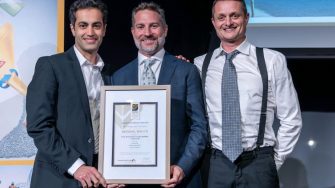UNSW Engineering wins National Award for Excellence in Concrete Technology & Innovation
UNSW Engineering researcher Dr Ali Kashani, with a team from CONTOUR 3D, and Group Architects, has won the prestigious National Award of "Excellence in Concrete" in Technology and Innovation awarded by the Concrete Institute of Australia (CIA).

